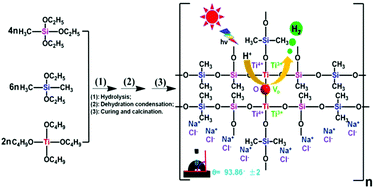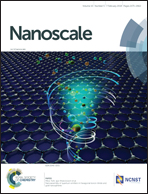Constructing a novel strategy for controllable synthesis of corrosion resistant Ti3+ self-doped titanium–silicon materials with efficient hydrogen evolution activity from simulated seawater†
Abstract
Exploiting solar power for hydrogen production from seawater is a great challenge owing to the corrosive properties of seawater and inadequate visible-light conversion capabilities. Here we report an uncomplicated post-processing method to construct Ti3+ self-doped titanium–silicon material with corrosion resistance. This is a new experimental method to regulate the electrical, optical, and photocatalytic performances of titanium-containing photocatalysts in a controlled way. Moreover, we demonstrate that Ti–O–Si materials with different calcination temperatures can serve as a highly efficient and convenient catalyst for photogeneration of hydrogen from water and simulated seawater. Consequently, the optimized Ti–O–Si (400) sample exhibits impressive enhancement in the photocatalytic hydrogen evolution performance, by nearly 10.0 and 43.1 times compared with TiO2 nanoparticles in water and simulated seawater. The Ti–O–Si (400) with substantial Ti3+ and oxygen vacancies exhibits an excellent photocatalytic H2 production performance due to the improved separation and transmission of the photogenerated electron–hole, the extended visible light response, and corrosion resistance. Our work opens a new door to engineering the intrinsic properties of the titanium-containing materials.



 Please wait while we load your content...
Please wait while we load your content...